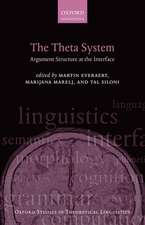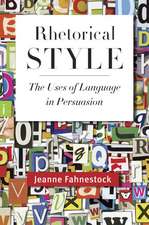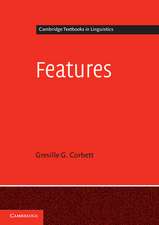Argument Encoding in Japanese Conversation
Autor M. Shimojoen Limba Engleză Hardback – 7 feb 2005
| Toate formatele și edițiile | Preț | Express |
|---|---|---|
| Paperback (1) | 641.53 lei 6-8 săpt. | |
| Palgrave Macmillan UK – 2005 | 641.53 lei 6-8 săpt. | |
| Hardback (1) | 645.96 lei 6-8 săpt. | |
| Palgrave Macmillan UK – 7 feb 2005 | 645.96 lei 6-8 săpt. |
Preț: 645.96 lei
Preț vechi: 759.96 lei
-15% Nou
Puncte Express: 969
Preț estimativ în valută:
123.62€ • 134.23$ • 103.84£
123.62€ • 134.23$ • 103.84£
Carte tipărită la comandă
Livrare economică 22 aprilie-06 mai
Preluare comenzi: 021 569.72.76
Specificații
ISBN-13: 9781403937056
ISBN-10: 1403937052
Pagini: 272
Ilustrații: XIV, 286 p.
Dimensiuni: 152 x 229 x 18 mm
Greutate: 0.57 kg
Ediția:2005
Editura: Palgrave Macmillan UK
Colecția Palgrave Macmillan
Locul publicării:London, United Kingdom
ISBN-10: 1403937052
Pagini: 272
Ilustrații: XIV, 286 p.
Dimensiuni: 152 x 229 x 18 mm
Greutate: 0.57 kg
Ediția:2005
Editura: Palgrave Macmillan UK
Colecția Palgrave Macmillan
Locul publicării:London, United Kingdom
Cuprins
List of Tables Acknowledgements Notes on Transcriptions List of Abbreviations PART 1: INTRODUCTION Four Argument Types and Six Encoding Types Saliency, Activation and Attention Episodic Memory and Mental Processing Instructions PART 2: PREVIOUS STUDIES ON THE SIX ARGUMENT ENCODING TYPES Wa and Ga : A Contrast in Pragmatic Focus Zero Anaphor, Ga and Wa : Referential Progression Contrastive Wa Wa for Non Subjects Grammatical Properties of Wa Grammatical Properties of the Zero Particle Syntactic and Semantic Factors in Zero Particle Use Functional Properties of the Zero Particle Functional Properties of O Ga and O : The Split Case Marking Post-predicative Encoding Summary PART 3: CONVERSATIONAL JAPANESE DATA Introduction Identification of Arguments Overview of Tokens Saliency and Argument Types PART 4: ANAPHORIC SALIENCY Referential Distance Measurement Anaphoric Saliency and Argument Types Anaphoric Saliency and Encoding Types PART 5: CATAPHORIC SALIENCY Referential Persistence Measurement Cataphoric Saliency and Argument Types Cataphoric Saliency and Encoding Types Cataphoric Frequency of Reference and Persistence Encoding Types in Persistence Chains PART 6: THE SIX ARGUMENT ENCODING TYPES AS A SYSTEM Saliency and Argument Types Summary Zero Anaphor and Ga/O Wa and the Zero Particle Post-predicative Encoding The Argument Encoding System The Encoding Types as Mental Processing Instructions PART 7: POST-PREDICATIVE ENCODING: COMPREHENSION-BASED CLAIMS REVISITED Important/Urgent Information First Scrambling: The Production-based View Post-predicative Arguments in the Coversation Data Relative Prominence of Structure Conclusions Appendix: Acceptability Judgment Task for Nominative/Accusative N2 Tokens Notes References
Notă biografică
MITSUAKI SHIMOJO is Assistant Professor and Director of the Japanese Program, Department of Linguistics, The State University of New York, at Buffalo, USA.














